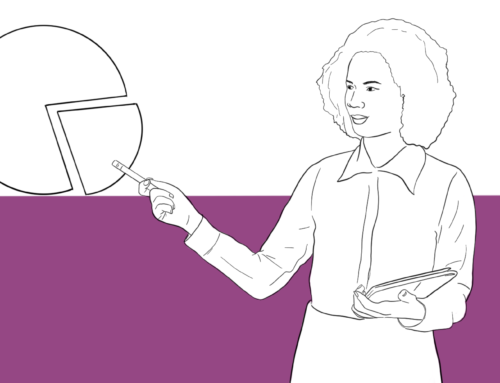The word “Algorithm” has been used for decades dating back to the time of Alan Turing the father of modern computing. Current interest in algorithms has developed due to the vast amounts of data being generated today and the desire to process and understand it.
Heavy talk about algorithms came to light after the 2016 US elections when many people on the interwebs started pointing fingers at Facebook arguing that their newsfeed algorithms played a major role in influencing voters and spreading fake news. The election campaigns are believed to have targeted Facebook users based on factors such as gender, location, and other factors to highly persuade undecided voters into supporting Trump. Specifically, advertising on Facebook increased the probability that a non-aligned voter would decide to vote for candidate Trump.
What are Algorithms?
In its simplest form, an algorithm is a sequence of instructions or rules to get something done. A basic example of this can be a set of instructions followed to plant a seed in a small pot.
- Step 1 is to put soil in a pot
- Step 2 is to create holes in the soil added
- Step 3 is to put seeds in the holes created
- Step 4 is to cover the seeds with soil
- Step 5 is to water the seeds.
There are plenty of steps one can follow to achieve the same output above. In computing, algorithms tell a computer how to perform a given task for a user. But since computers don’t understand the layman’s language, these instructions have to be translated to a language understandable by a computer. This is where programming languages such as python, java, c++, FORTRAN, COBOL, and many others come in.
Algorithms are everywhere, chances are you’ve encountered the works of an algorithm in your day-to-day digital life but you have no slight idea that an algorithm was in play.
Take a case in point, if you used any On-demand streaming services such as YouTube or Netflix, it will recommend programs “you might also like” after you’ve watched a movie or video. The ability to suggest (recommend) something for you comes about the computer simply curating your data history, looking for links and generating a logical conclusion. The suggestions given to you may not be always right but also may not be far away from what you may be interested in. That is the work of an algorithm.
“The Google and Facebook algorithms not only know exactly how you feel, they also know myriad other things about you that you hardly suspect. Consequently you should stop listening to your feelings and start listening to these external algorithms instead. Whereas humanism commanded: ‘Listen to your feelings!’ Dataism now commands: ‘Listen to the algorithms! They know how you feel.’ When”
― Yuval Noah Harari, Sapiens: A Brief History of Humankind
The other vivid examples that show the works of an algorithm at their core include; Google’s search engine that arrives at whatever we are trying to find when we search the web, Google maps which show us possible routes to reach our destination, Self-driving cars/ autonomous vehicle trials are powered by algorithms that replicate human decision-making according to available intelligence, recommender systems on e-commerce sites, spam detection in emails, etc.

More relatedly, algorithms also influence what you see on your social media platforms such as Facebook, Twitter, and even Instagram by prioritizing what posts show up in your feed based upon what they think is most important to you, what you always like, retweet or double-tap. In the field of data scientists, algorithms help them simplify, distill, and derive insights from large amounts of data.
Can Algorithms Play a role in Improving Governance and Service Delivery?
Adoption of technology to improve the way governments operate and deliver services has proven to be a better option and has increased efficiency in countries and communities where it has been implemented. Algorithms are being used in an ever-increasing number of areas, in ever-increasing ways. They are bringing big changes in their wake; from better medical diagnoses to driverless cars, they hold the potential and capability to be a force to reckon with if governments want to be more efficient and effective in service delivery.
Governments collect so much data from various sectors and in MDAs, algorithms are essential to understand this data and help make decisions off it. African countries that collect weather and crop data will need algorithms that can be used to analyze it and subsequently enable governments, donors, farmers, relief agencies, NGOs, and others to implement more rapid, tailored interventions to prevent food crises by forecasting underperforming crops in African countries.

According to a research paper by Noe Elisa from the Department of Computer Science at The University of Dodoma, algorithms have the potential to create an intelligent risk credit scoring that has the potential to bring sustainable lending where banks in Africa have been too cautious in the past given lack of either collateral or credit history.
Governments world all over continue to overwhelmingly be met with ‘unfulfilled promises’ to the citizens and the growing demand for improvement in service delivery. To pull this off, government leaders are going to have to employ various tools that can help them improve their efficiency, become more effective, and focus on the people who need help the most. This way, they’ll need to turn to algorithms to arrive at this.
In China, where there aren’t enough radiologists to keep up with the demand of reviewing 1.4 billion CT scans each year to look for early signs of lung cancer, a company called Infervision has trained and taught algorithms to augment the work of radiologists to allow more efficient and accurate diagnosis of cancer.

In Allegheny County southwest of the U.S. state of Pennsylvania, algorithms are being employed to spur Child Protective Services and also focus on the cases that represent the greatest risk to children’s safety and wellbeing. In Chicago, algorithms are being used to try and get health inspectors out to restaurants a little bit faster to avoid food poisoning issues, while in New Orleans, algorithms are being used to understand census data so as to predict which blocks have the highest risk of fire. Subsequently, they went door-to-door to distribute free smoke detectors — saving lives and reducing property damage.
However, it’s not all glory and praises for algorithms. Yes, they’ve exhibited a high degree of improving how our day-to-day digital lives operate and have also given the great potential to make the way governments operate much better but they also raise lots of questions and always will should there be a misjudgment or consequences.

When algorithms are built on faulty data or biased assumptions, they risk producing unintended consequences that may be a ‘disaster’. This is because decisions made based on algorithms may be biased or may be wrong due to flawed data. To counter the unintended or undesirable consequences of algorithms, there have been algorithm toolkits that have been published online to help local leaders ensure that decisions made based on algorithms are unbiased and deliver the best outcomes for residents.
Written by Arthur Kakande





Leave A Comment